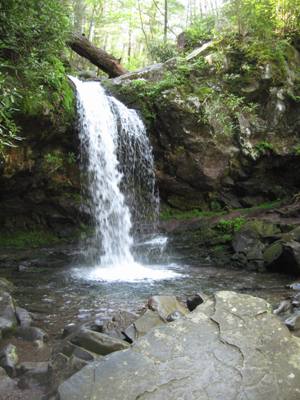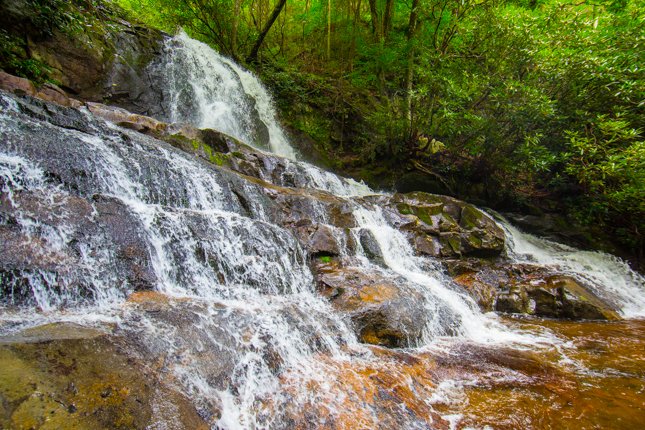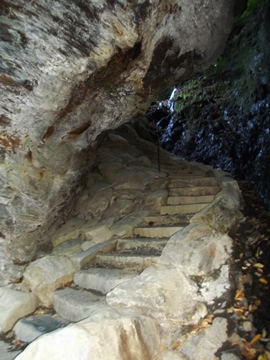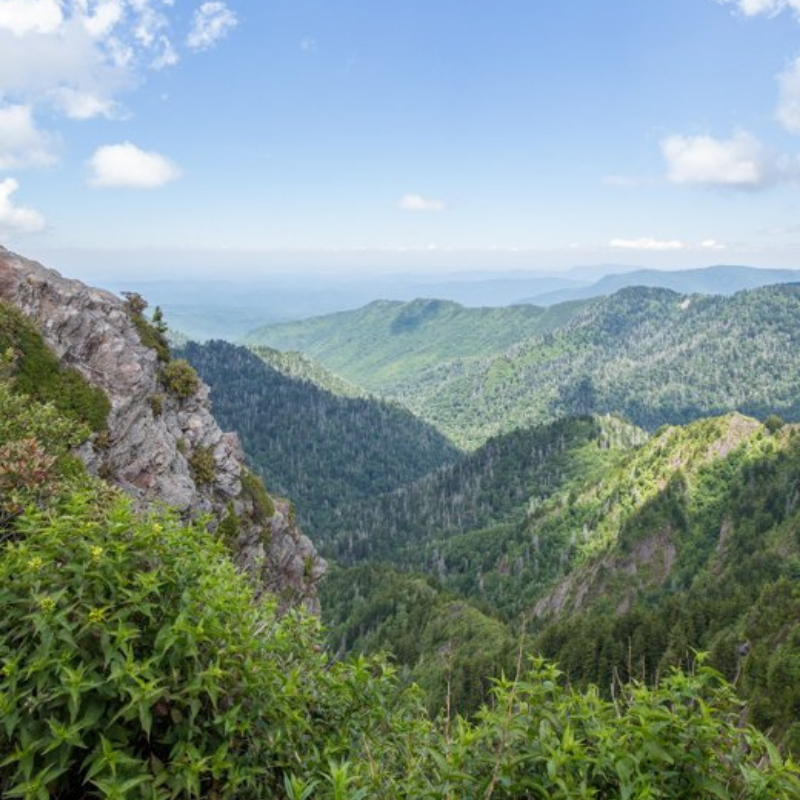
The Great Smoky Mountains are an incredibly unique and beautiful place that everyone should visit at least once. These grand slopes were formed an estimated 200 to 300 million years ago, making them one of the oldest mountain chains in the world. This age combined with its unique climate and environment has also helped to make it one of the most biologically diverse places in the continental United States. You'll find over 4,000 plants, 140 tree species, 200 bird species and types, nearly 70 native fish species, over 60 mammal species, and 80 species of amphibians and reptiles here. Even during the coldest of winter days, you are apt to see some amazing flora and fauna on a hike out and about the Great Smoky Mountains.
But the question is, what hike should you take to see the beauty of the Great Smoky Mountains during your winter vacation? The following is a look at some of the best hikes this area has to offer even when the leaves fall away:
Trillium Gap Trail

Trillium Gap Trail is an 8.9-mile out-and-back located in Tennessee. You'll find the trailhead a bit southeast of Gatlinburg off of Roaring Fork Motor Nature Trail. This is also the trailhead and of another greatly beloved trail called the Grotto Falls Trail. For the first 1.5-miles of the Trillium Gap Trail, you'll also follow the Grotto Falls Trail through the forests and onto a 25-foto waterfall.
After you've enjoyed your time at the falls, keep going all the way up the mountain and onto its end at Trillium Gap. Note, there is a pretty big elevation gain here. You'll go upwards more than 1,200 feet as you climb the mountain.
Laurel Falls Trail

This is a short 2.5-mile out-and-back trail that's also close to Gatlinburg, Tennessee. It also happens to be a much easier hike that's ideal for hikers of all skill levels. In fact, many Smoky Mountains hikers will use this short trail as a type of warm-up before they get onto a longer hike.
As its name suggests, the Laurel Falls Trail ends at Laurel Falls. That is an 80-foot-high waterfall that is named for the beautiful mountain laurel, an evergreen shrub that boasts bright green leaves every season of the year.
Alum Cave Trail

This hiking trail is one that is truly best done during the winter, when the weather is cold enough for ice and snow. That's because the Alum Cave Trail meanders 2.3 miles along old-growth hardwoods forest and ends at the Alum Cave Bluffs. These bluffs offer some pretty cool views of icicle formations.
Despite being a short-in-mileage hiking trail, the Alum Cave Trail is a difficult trail to hike. Hikers here will experience an elevation change of around 1,200 feet. This elevation gain happens pretty much the entirety of the trail and so come prepared for a challenge.
Metcalf Bottoms Trail
Want something easy but scenic? Check out the Metcalf Bottoms Trail. This is a short 1.5-mile out-and-back trail that boasts a mere 187 feet of elevation gain. That makes it the easiest of all the trails on our list.
But easy doesn't mean unenjoyable. The Metcalf Bottoms Trail is an all-season trail, but it has a real special magic during the winter. This trail takes hikers down into the historic Little Greenbrier Community, a small ghost town of a mountain village. Here, you will see an old schoolhouse, cabin, and cemetery. During snowy weather, this place looks like something out of snowglobe.
Charlies Bunion and the Jump Off

This is one of the most popular Appalachian day hikes for locals in the Gatlinburg area, but it isn't the best marked for non-locals. You'll find the trailhead for this trail by going to the Newfound Gap Parking Area in the Smoky Mountains. Just left of the scenic overview, you'll see an unpaved path. Follow the trail signs for the Appalachian Trail and continue on following the signs for Icewater Spring.
This part of the Appalachian Trail will eventually lead you to Charles Bunion, hence the trail's nickname around locals. It is an 8-mile round-trip trek and is renowned for offering some outstanding viewing spots that allow hikers to see well out across the Smoky Mountains.
No Matter Which Trails You Go, Keep These Safety Tips in Mind
Hiking in the winter in the Great Smoky Mountains is truly a magical experience. But as great as this experience can be, it's important to always be safe and be aware when heading out into the forests.
- Check road conditions before you head out. The National Park and Forest Service closes several popular backroads during the winter due to the threat of slick and icy roads. So before you plan your route to a hiking trail, make sure to check to be sure your route is open.
- Plan for shorter days. This one might seem obvious, but if you are used to hiking during the summer, then the short days of winter may catch you off guard. You can't walk the same distance in a day as you might otherwise have due to there simply not being enough light. Make sure to plan your hiking trip accordingly, such as by going earlier in the day or opting for shorter hikes.
- Wear layers. Getting out of the car and onto the trail is a lesson in dealing with cold temperatures. But the longer you walk, the warmer you get. Wear layers and bring a bag to store those jackets as needed.
- Make sure others know where you are. The weather can often make for more dangerous hiking conditions. Thus, it is important to make sure you have someone who knows where you are whenever you go hiking, but especially when you go hiking during the winter.
We hope this list of great spots and helpful winter hiking tips helps and inspires you this winter. Now go out, and start making your vacation dreams come true!